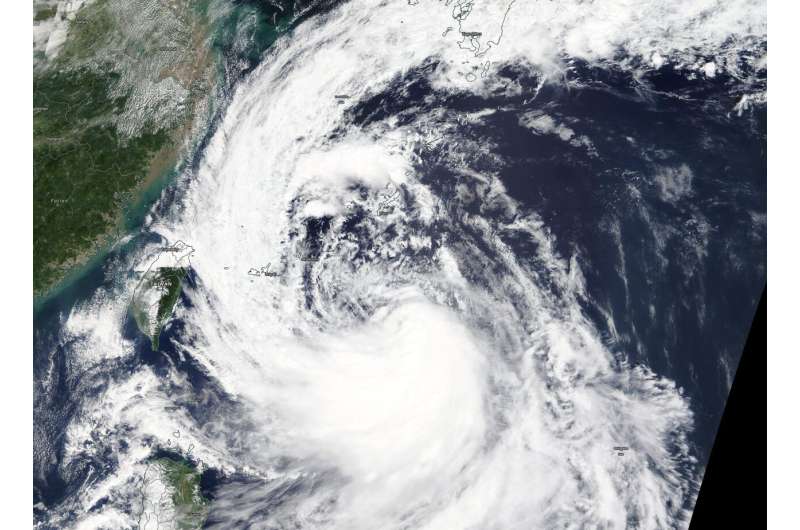NASA catches Tropical Storm Tapah by the tail

Tropical Storm Tapah has a huge "tail" on NASA satellite imagery. NASA's Terra satellite captured an image of the northwestern Pacific Ocean storm that revealed a large band of thunderstorms that resemble a large tail. The NASA imagery also indicated that the storm is getting better organized.
On Sept. 19, the Moderate Imaging Spectroradiometer or MODIS instrument that flies aboard NASA's Terra satellite provided a visible image of Tapah. The image showed the center of the storm was a good distance east of Taiwan and the northern Philippines. From the storm's center a large band of thunderstorms extended from its western side, and stretched through the East China Sea all the way north into the Sea of Japan. That large thunderstorm band made up Tapah's "tail."
The image also showed that there is a large band of powerful thunderstorms circling Tapah's low-level center of circulation. The shape of the storm is a clue to forecasters that a storm is either strengthening or weakening. If a storm takes on a more rounded shape it is getting more organized and strengthening. Conversely, if it becomes less rounded or elongated, it is a sign the storm is weakening. Tapah has appeared to become more symmetrical in the MODIS imagery, indicating it is getting better organized.At 11 a.m. EDT (1500 UTC) on Sept. 20, the center of Tropical Storm Tapah was located near latitude 24.6 degrees north and longitude 127.1 degrees east. That puts the center about 147 nautical miles south of Kadena Air Force Base, Okinawa, Japan. Maximum sustained winds were near 50 knots (57 mph/92 kph).
The Joint Typhoon Warning Center or JTWC noted that Tapah was moving to the north-northeast. JTWC uses satellite imagery in their forecasts and has indicated that Tapah is strengthening. The JTWC forecast takes Tapah on a curved path to the northwest then northeast and through the Sea of Japan over Sept. 22 and 23.
Hurricanes are the most powerful weather event on Earth. NASA's expertise in space and scientific exploration contributes to essential services provided to the American people by other federal agencies, such as hurricane weather forecasting.
More information: For updated forecasts, visit: https://www.nhc.noaa.gov
Provided by NASA's Goddard Space Flight Center





















